Hypoallergenic dog breeds are a hotly-debated topic in the dog world. Though some people (particularly irresponsible breeders) will claim non-shedding breeds are hypoallergenic, they’re still going to trigger dog allergies in many people.
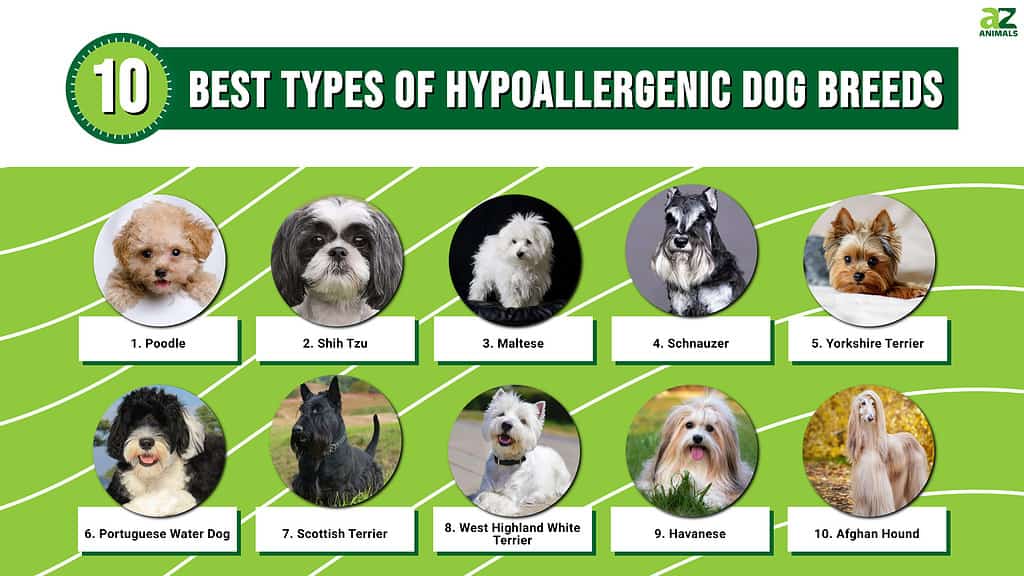
In today’s article, we’ll review ten hypoallergenic or non-shedding dog breeds. We’ll also talk about the credibility of calling dogs hypoallergenic and whether they might still set off your allergies.
Are Any Dog Breeds Truly Hypoallergenic?
Unfortunately, many so-called “hypoallergenic” dog breeds set off dog allergies in some people. This is because dog allergies aren’t caused by fur but by dander–which all dogs have, regardless of their coat type.
Some people say hypoallergenic breeds give them more symptoms, while others find their symptoms vary based on the individual dog.
Before adopting, please visit the dog for an extended period of time. Give them some good butt, and ear scratches to get that dander in the air, touch your face, and make sure that none of this will trigger symptoms.
This way, you’ll know before bringing your dog home rather than setting them and yourself up for heartbreak if you can’t tolerate your allergy symptoms flaring up around them.
With that said, here are some dog breeds that don’t shed if you’ve found that to be easier on your allergies!
1. Poodle

A Teacup Poodle.
©Eloine Chapman/Shutterstock.com
Poodles have fluffy, curly hair. Their eyes are dark and intelligent; their ears are floppy. Their bodies are lithe with deep chests.
There are two sizes of Poodle, the Standard and the Miniature Poodle. Standards are over 15 inches tall and weigh 40-70 pounds. Miniature Poodles are 10-15 inches tall and 10-15 pounds.
Though they’re stereotyped as snooty dogs, Poodles were actually bred to work. They’re loving, outgoing, and very high-energy.
2. Shih Tzu
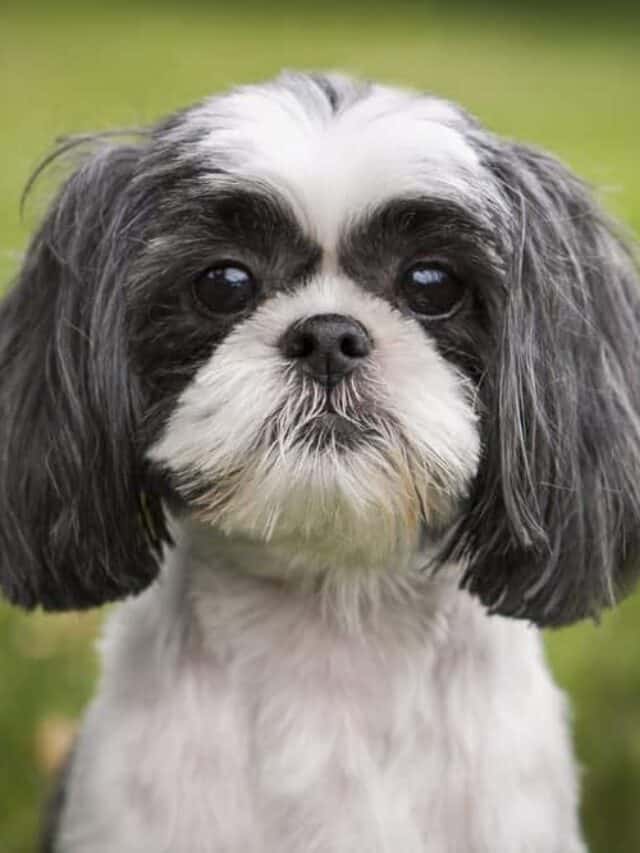
Shih Tzus were originally bred by Chinese royalty!
©iStock.com/Angel LeBlanc
On the other end of the spectrum, Shih Tzus are lap dogs. They need only light exercise, such as a short daily walk.
These dogs are playful, affectionate toward family, and sometimes wary of strangers. Shih Tzus tend to be easy to train, but they are sometimes stubborn and like to get their way. It’s important to avoid aversive training methods and instead use positive reinforcement while ignoring or redirecting their cute begging and other unwanted behaviors!
Weighing just 9-16 pounds, Shih Tzus are little dogs. They have long hair that some dog guardians love to style, and others cut short for easy maintenance. Their ears are floppy, their eyes are large, and their snout is unfortunately bred short.
Because of their short snouts, the dogs are susceptible to various health problems. Shih Tzus are not bred ethically, so I recommend searching for a rescue dog if you want to adopt one.
3. Maltese

The teacup breeds have tiny mouths, stomachs, and bladders, so they require a specific diet and feeding routine.
©May Rice/Shutterstock.com
Maltese dogs stand 7-9 inches tall and weigh under 7 pounds. These itty-bitty dogs are white with a straight, silky coat.
They have large eyes and curled tails and are often seen sporting cute ponytails to keep their fur out of their faces.
Though you won’t find them taking down a burglar, they do make good watchdogs and may take it upon themselves to become your own yappy security alarm.
They’re known for being gentle, clingy, intelligent, and stubborn. Training may be a challenge, so be sure to have patience and use force-free training methods.
Some Malteses are bred to be brachycephalic or to have squished snouts. If you adopt from a breeder, ensure they’re breeding responsibly–part of this is breeding dogs with longer snouts, so they don’t suffer from breathing difficulties and other health problems associated with brachycephalic breeds.
Adopting a rescue Maltese is even better, and you won’t have to worry about supporting unethical breeding. However, still, be aware that shorter-snouted dogs may need more veterinary care.
4. Schnauzer

Schnauzers come in standard and mini sizes.
©Liliya Kulianionak/Shutterstock.com
Like Poodles, there are two sizes of Schnauzer. Standard Schnauzers are 17.5-19.5 inches tall and weigh 30-50 pounds, while Miniatures are only 12-14 inches and 11-20 pounds.
Both types of Schnauzer have unique, wiry coats. To have a Schnauzer that doesn’t shed much, you’ll need to have them hand-stripped by an experienced groomer and maintain it daily by brushing and pulling out dead fur.
Though the fur can be clipped short, this will damage the coat, make it softer, and increase the amount your dog sheds.
Schnauzers are protective, eager to please, and affectionate toward their families. They may be wary of strangers and are very vocal!
5. Yorkshire Terrier

Small breeds like Chihuahuas and Yorkshire Terriers are prone to retaining their baby teeth for extended periods of time.
©Anna Vasiljeva/Shutterstock.com
Yorkshire Terriers, or Yorkies, have straight, shiny coats. They may look like little princes and princesses, but the American Kennel Club actually refers to the breed as “tomboyish.”
They’re friendly with almost everyone, playful, and high energy. Yorkies are typically easy to train and are pretty adaptable to new situations.
They have upright, triangular ears, large, intelligent eyes, and short snouts. As discussed above, brachycephalic breeds have inherent health problems affecting their daily lives. That said, I highly recommend adopting a Yorkie from a rescue or shelter rather than shopping with a breeder.
6. Portuguese Water Dog
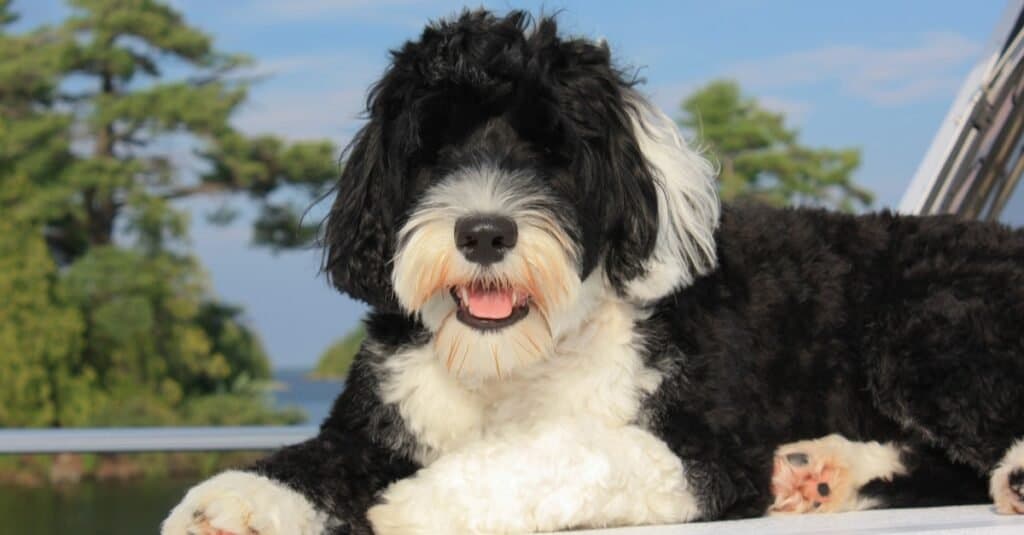
Portuguese Water Dogs were used as fishermen’s helpers to act as couriers from ship to shore or ship to ship.
©Lynda McFaul/Shutterstock.com
Portuguese Water Dogs, or Porties, have long, curly fur. They stand 17-23 inches tall and weigh 35-60 pounds.
These dogs have adventurous spirits and are high-energy. They’re friendly, easygoing, and eager to please.
Porties have floppy ears and hair that’ll fall right into their eyes if left unstyled. They can be partially shaved, like Poodles, where some fur is left fluffy and long.
As their name suggests, these working dogs love the water. Activities like swimming or playing in the sprinkler are fantastic for them!
7. Scottish Terrier
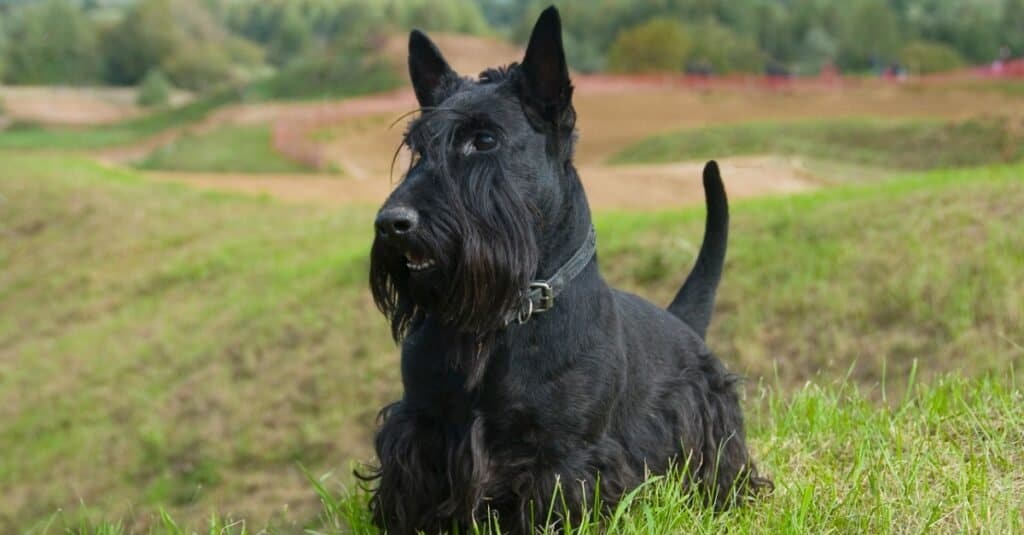
Scottish Terriers, bred in Scotland, used to hunt foxes, badgers, and many burrowing animals.
©iStock.com/kostya6969
These dogs, also called Scotties, are around 10 inches tall and weigh 18-22 pounds. They’re most well-known for their long “mustaches” and the fur that curls over their eyes like eyelashes when cut in a show trim.
Their coat must be hand stripped once monthly by an experienced groomer. While it can be clipped instead, this will damage the coat. Dogs with clipped fur will also shed more than dogs with coats maintained through hand-stripping.
Scotties are affectionate toward their families. They’re playful and require a lot of daily exercises, including walks and hands-on playtime.
You may find training to be a challenge due to their intelligence. Be sure to change it up frequently, keep training sessions short, and avoid harsh training methods.
8. West Highland White Terrier

The West Highland Terrier is also known as a Westie.
©iStock.com/Eudyptula
West Highland White Terriers, also known as Westies, are small white dogs. They are 10-11 inches tall and weigh 15-20 pounds.
Westies are known for being funny, sprightly, and clingy. They do best in families where someone is home most of the day and shouldn’t be left alone for long periods.
They’re playful, high-energy, and extremely vocal. Training your Westie to stop barking is a good idea, but don’t expect them to be completely quiet, as it’s not in their nature.
This is another dog that should be hand-stripped if you want to keep their coat mostly shed-free.
9. Havanese

Havanese dogs are small at 8.5-11.5 inches and 7-13 pounds.
©Sandra Huber/Shutterstock.com
Havanese dogs have straight, fluffy coats. They’re very small at just 8.5-11.5 inches and 7-13 pounds.
These dogs tend to be friendly toward everyone, from strangers to children to other pets. Of course, it’s important to introduce dogs to others carefully, especially to kids and other animals. At no time should any dog or child be left unattended.
These dogs can be yappy, but they’re playful, eager to please, and incredibly sweet! They need only moderate exercise.
10. Afghan Hound

The large Afghan hound is known for being quite aloof.
©WildStrawberry/Shutterstock.com
Last but not least, the Afghan Hound is a large dog. They’re 25-27 inches at the shoulder and weigh 50-60 pounds.
These sighthounds were bred to hunt using their sense of sight. Their bodies were built to sprint after prey, so they’re lithe and agile.
It’s important to keep them enclosed or leashed. Otherwise, they will take off at top speeds!
As with most sighthounds, Afghan Hounds are known for being quite aloof and “cat-like.” They can be trained using force-free techniques by finding ways to keep them interested.
While they need plenty of exercise, they have a good “off switch” and will be happy to lounge around the house the rest of the time. It’s important for them to have a large, enclosed backyard where they can sprint to their heart’s content. You won’t be able to keep up with this breed at top speed, and they must run like they were bred to!
That completes our list of hypoallergenic dog breeds. Remember that different people cope differently with dog allergies, and the dogs on this list still might set yours off despite shedding very little.
Adopting a dog is a lifelong commitment, so please don’t make your decision lightly!
Bonus: 3 More Hypoallergenic Dog Breeds
If you suffer from allergies and love dogs you may have thought that a “doodle” was your only option. We’ve presented a list of diverse doggies with low dander to suit any personality and lifestyle – but there’s more! We’ve extended the list to include three more dogs to consider. You may not be familiar with these breeds – but they are all adorable, smart, playful, and hypoallergenic!
American Hairless Terrier
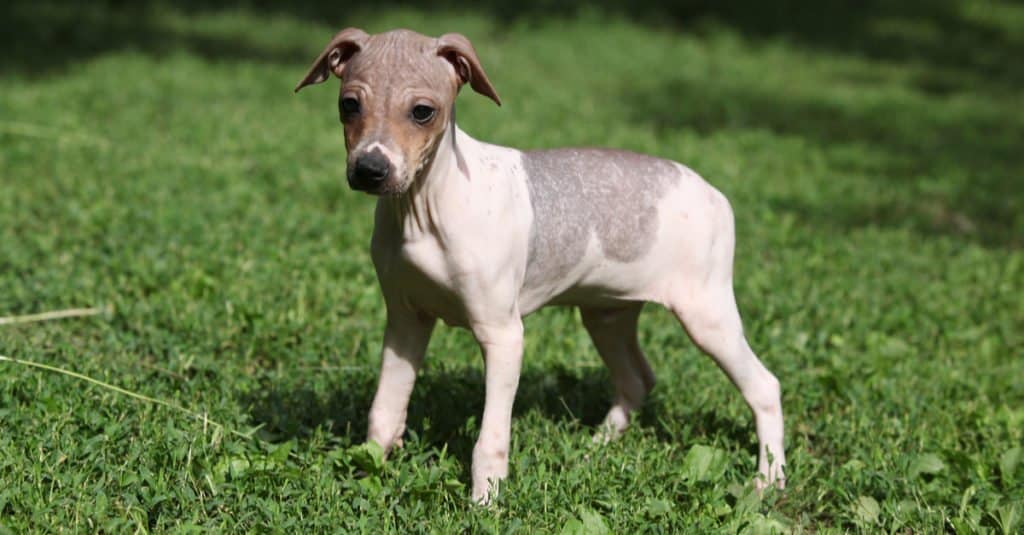
American Hairless Terriers are great for allergy sufferers.
©Zuzule/Shutterstock.com
The American Hairless Terrier is a great choice for allergy sufferers because it comes in coatless or several short-coat varieties. These dogs are smart, affectionate, playful, and easy to train. They stand between 12 – 16 inches at the shoulder and weigh 12 – 16 pounds – a perfect size for an indoor companion.
You can’t get more hypoallergenic than the hairless variety – but they come with their own challenges. Sunburn is possible during the summer and they need to wear coats or sweaters when it’s cold. The hairless variety often has eyebrows and whiskers, while the coated has a short, shiny, easy-to-care-for coat. These sweet pups are protective of their humans and make great watchdogs.
Coton de Tulear
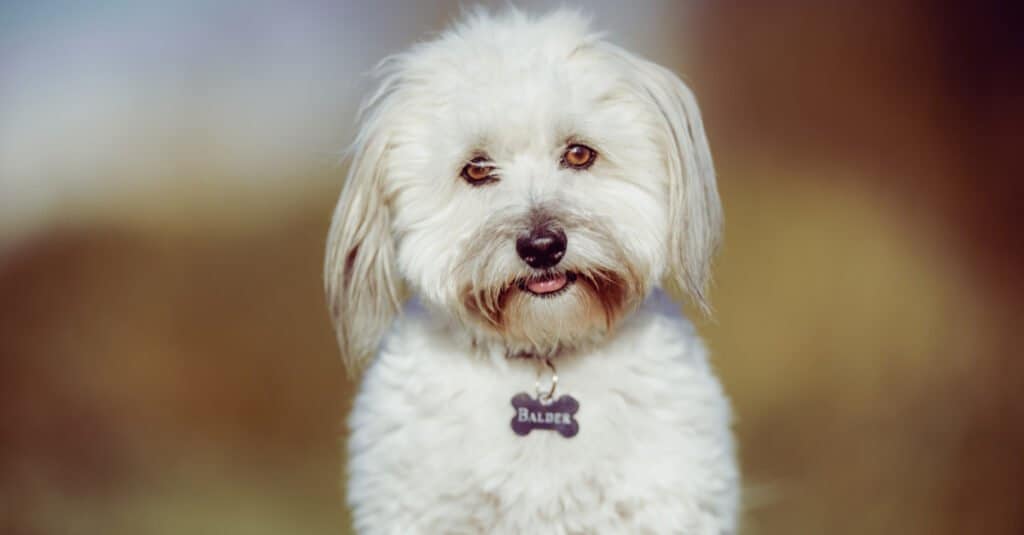
Coton de Tulears are easy to groom with a short puppy cut.
©BIGANDT.COM/Shutterstock.com
A happy-go-lucky breed known to be perfect companions, the Coton de Tulear’s cottony coat may require frequent brushing – but they don’t shed much. They also look adorable in a short puppy cut that would cut down on their grooming needs. At 9-11 inches tall and 8-15 pounds – these little cuties are considered by many to be the perfect indoor pet.
These sweet, affectionate dogs love nothing better than following their human around – and they are also great with children and other pets. Coton de Tulear is the “Royal Dog of Madagascar,” and was bred to provide amusement and companionship. Another benefit of this breed is their healthiness and longevity – they live 15 – 19 years!
Irish Water Spaniel
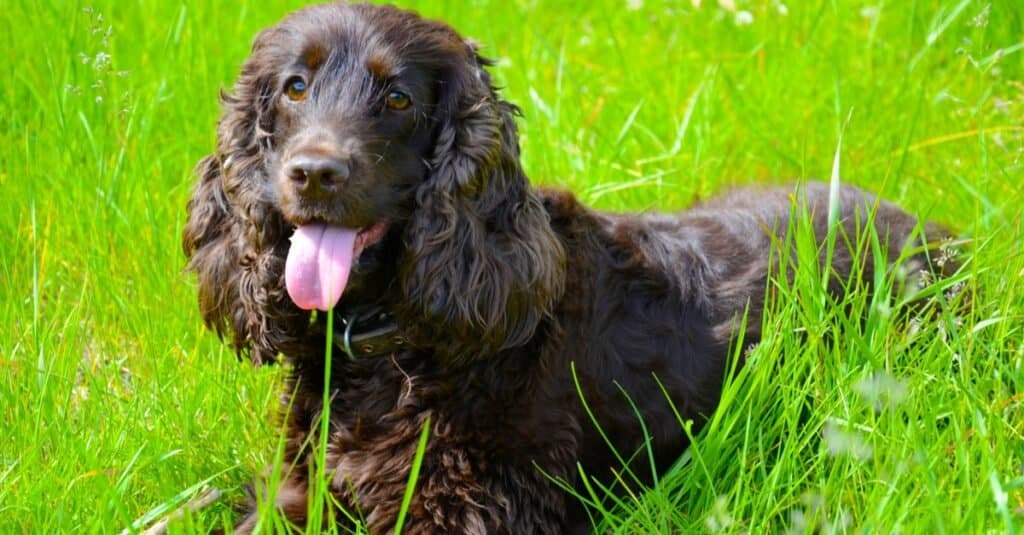
Irish Water Spaniels are champion swimmers.
©Nikolai Belyakov/Shutterstock.com
Irish Water Spaniels are medium-large dogs that are champion swimmers and are known for their loyalty to their families. This breed sports a hypoallergenic coat that requires weekly brushing and trimming every two months.
The beautiful, liver-colored coats of this breed feature long, loose curls that repel water should they need to retrieve ducks on the hunt or splash in the swimming pool with their families. Irish Water Spaniels grow up to 24 inches in height and weigh between 45 and 68 pounds. They are affectionate toward their humans and make excellent family pets.
Summary Of The 10 Best Types of Hypoallergenic Dog Breeds
| Rank | Dog Breed |
|---|---|
| 1 | Poodle |
| 2 | Shih Tzu |
| 3 | Maltese |
| 4 | Schnauzer |
| 5 | Yorkshire Terrier |
| 6 | Portuguese Water Dog |
| 7 | Scottish Terrier |
| 8 | West Highland White Terrier |
| 9 | Havanese |
| 10 | Afghan Hound |
The photo featured at the top of this post is © iStock.com/Jonathan Koh
Ready to discover the top 10 cutest dog breeds in the entire world?
How about the fastest dogs, the largest dogs and those that are -- quite frankly -- just the kindest dogs on the planet? Each day, AZ Animals sends out lists just like this to our thousands of email subscribers. And the best part? It's FREE. Join today by entering your email below.
Thank you for reading! Have some feedback for us? Contact the AZ Animals editorial team.






